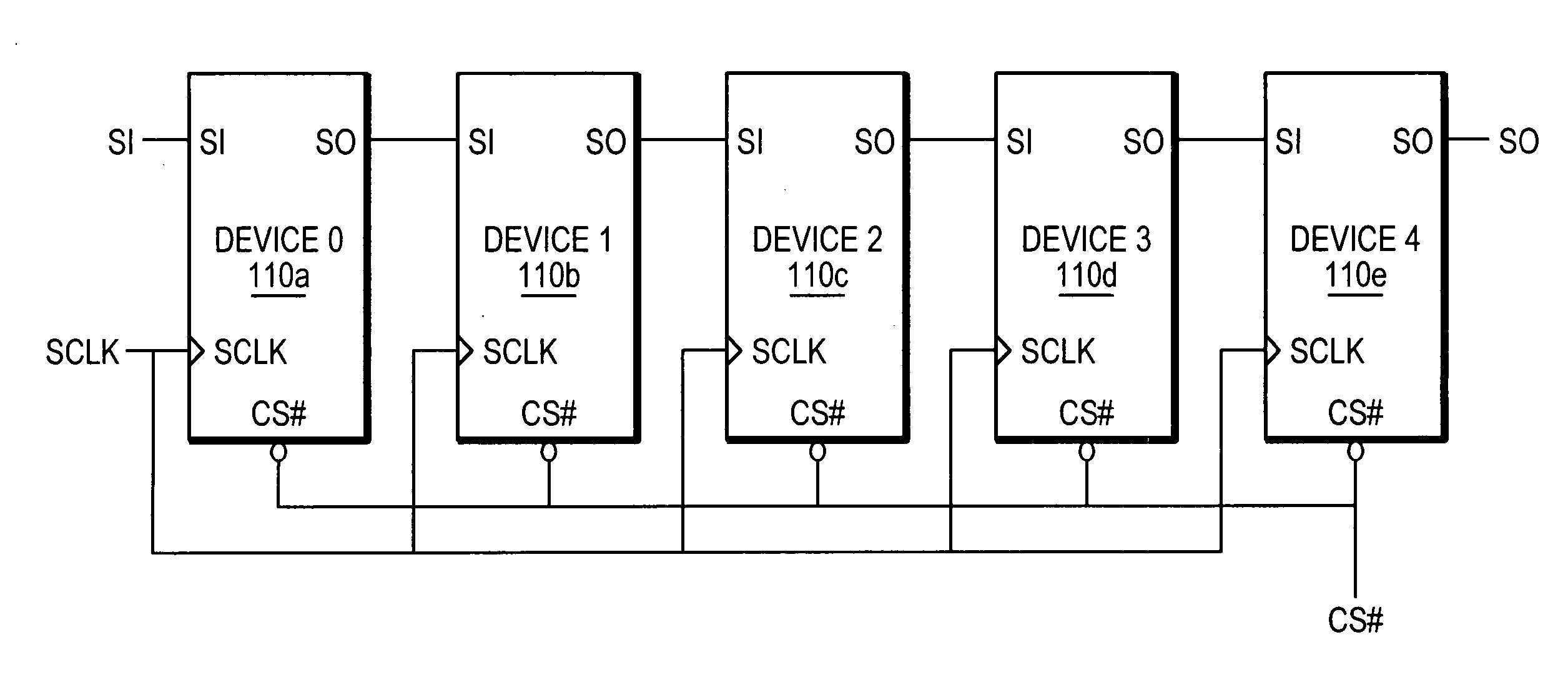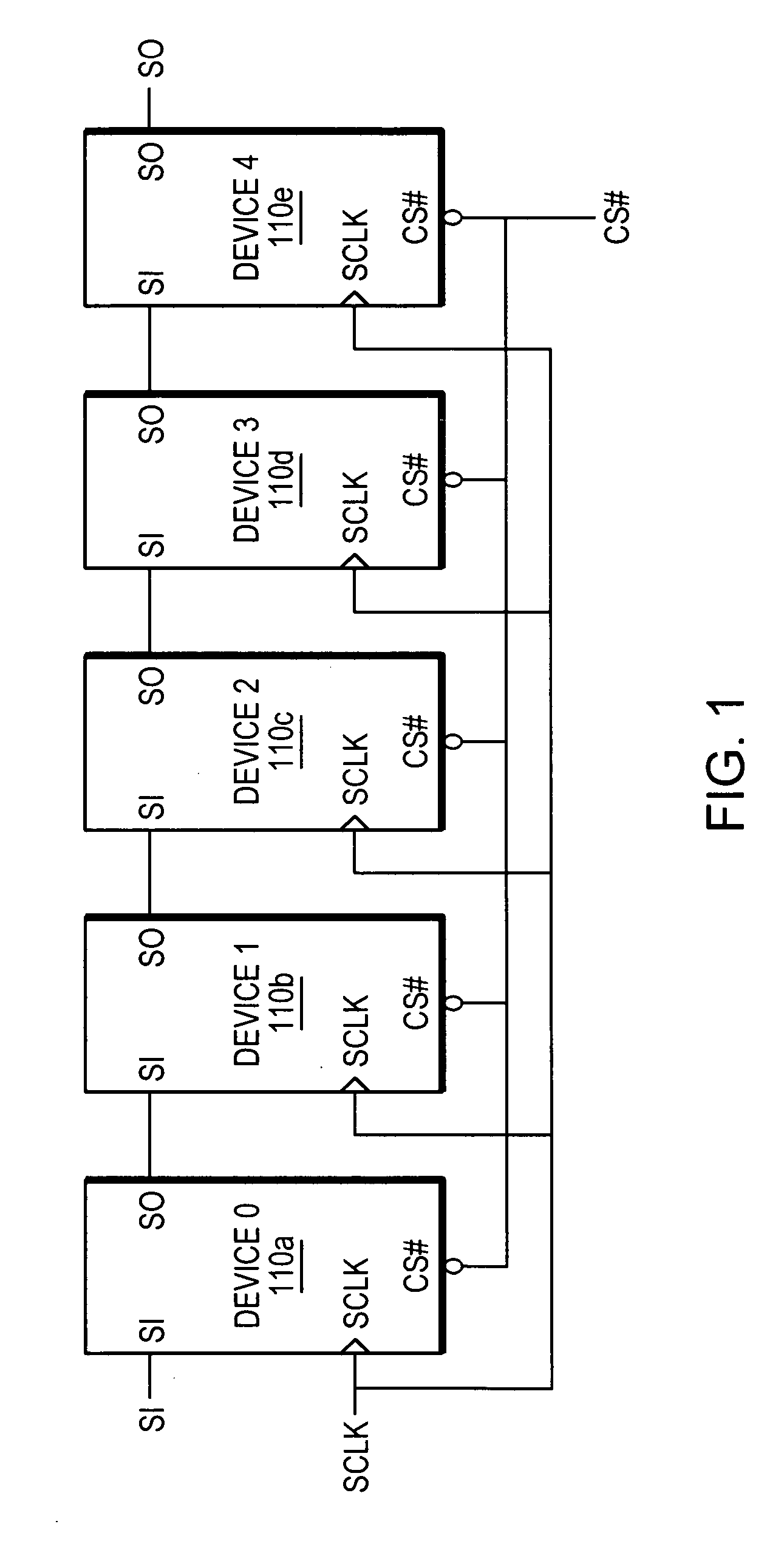Daisy chain cascading devices
a cascading device and chain technology, applied in the field of cascading devices of chain cascaded devices, can solve the problems of limiting the performance of these subsystems, adding to the complexity of boards that implement these subsystems, and limiting the number of devices incorporated in these subsystems, so as to reduce the complexity of implementation, reduce the footprint, and increase the speed
- Summary
- Abstract
- Description
- Claims
- Application Information
AI Technical Summary
Benefits of technology
Problems solved by technology
Method used
Image
Examples
Embodiment Construction
[0030] A description of preferred embodiments of the invention follows.
[0031]FIG. 1 is a block diagram of an exemplary device configuration comprising a plurality of single port devices 110a-e configured in a serial daisy chain cascade arrangement. The devices 110a-e are illustratively memory devices each of which contains a memory (not shown) which may comprise Dynamic Random Access Memory (DRAM) cells, Static Random Access Memory (SRAM) cells, flash memory cells and the like. Each device 110 comprises a serial input (SI), a serial output (SO), a clock (SCLK) input and a chip select (CS#) input.
[0032] The SI is used to transfer information (e.g., command, address and data information) into the device 110. The SO is used to transfer information from the device 110. The SCLK input is used to provide an external clock signal to the device 110 and the CS# input is used to provide a chip select signal to the device 110. An example of a device that may be used with the techniques descr...
PUM
 Login to View More
Login to View More Abstract
Description
Claims
Application Information
 Login to View More
Login to View More - R&D
- Intellectual Property
- Life Sciences
- Materials
- Tech Scout
- Unparalleled Data Quality
- Higher Quality Content
- 60% Fewer Hallucinations
Browse by: Latest US Patents, China's latest patents, Technical Efficacy Thesaurus, Application Domain, Technology Topic, Popular Technical Reports.
© 2025 PatSnap. All rights reserved.Legal|Privacy policy|Modern Slavery Act Transparency Statement|Sitemap|About US| Contact US: help@patsnap.com



